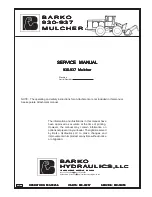
Surge Test Applications
12/3/2009 | 71-022 V6
D30R
53
Assembled Motors). In this case, a consistent double wave pattern will be seen at all voltage
levels. Separation due to rotor coupling should
not
be interpreted as a fault.
The operating voltage is the root mean square, a kind of average, of the AC power supply. For
our 13200 V example, multiply 13200 V by 1.4 to determine the maximum voltage level that
the coil undergoes during normal operation. This is approximately 18480 V suppose the
motor has an insulation fault at 18000 V. This motor will probably fail while in service before
it can be tested because the peak of the AC voltage will continuously stress the fault under
normal conditions.
The goal, therefore of the surge test is to detect weakness above the operating voltage of the
motor. Generally accepted industry standards suggest testing at twice the operating voltage
plus 1000 V. Refer to Recommended Voltages for a thorough description of how to determine
test voltages along with IEEE references that explain these recommendations.
As shown in the figures below, a good winding will produce stable wave patterns from zero
volts up to the recommended test voltage. Faults are displayed as unstable, flickering wave
patterns that appear as the voltage is increased.
Determination of a fault
If a wave pattern becomes erratic and/or flickers during testing, intermittent shorting or
arcing is probably occurring in the winding. Arcing is often accompanied by an audible sound.
It may be desirable to store the erratic wave pattern produced by this arcing for reference.
The operator needs to release the test (freeze the wave pattern) at the moment when the
wave pattern appears the most affected by the fault (reduced amplitude and increased
frequency or shift to the left).
Separation in two of three wave pattern comparisons indicates incorrect turns count. The
fault will be in the phase connected to the test lead in common between the two comparisons
which show the separation for wye-connected windings.
In the repair shop: separation of compared wave patterns on stators indicates a hard fault,
such as a solid turn-to-turn or group-to-group short, an incorrect turns count, or
misconnections.
In the Field: In assembled motors, separation of the wave patterns is often the effect of rotor
coupling, also known as rotor loading (see Rotor loading (coupling) when testing assembled
motors).
Open Circuits
−
If an open circuit occurs, the displayed waveform will look like Fig 9.2. Check the
connections between all three test leads and the device under test.
Fig 8-2: Good wave pattern (left) and how a live wave pattern may appear on display for an
intermittent short or arcing winding (right).
Summary of Contents for D30R
Page 6: ...Table of Contents 12 3 2009 71 022 V6 D30R 6...
Page 12: ...Safety precautions CE compliance 12 3 2009 71 022 V6 D30R 12...
Page 24: ...Coil Resistance Testing 12 3 2009 71 022 V6 D30R 24...
Page 28: ...Principles of High Voltage DC Testing 12 3 2009 71 022 V6 D30R 28...
Page 38: ...High Voltage DC Testing 12 3 2009 71 022 V6 D30R 38...
Page 50: ...Surge Testing 12 3 2009 71 022 V6 D30R 50...
Page 70: ...Data Recording Retrieving 12 3 2009 71 022 V6 D30R 70...
















































